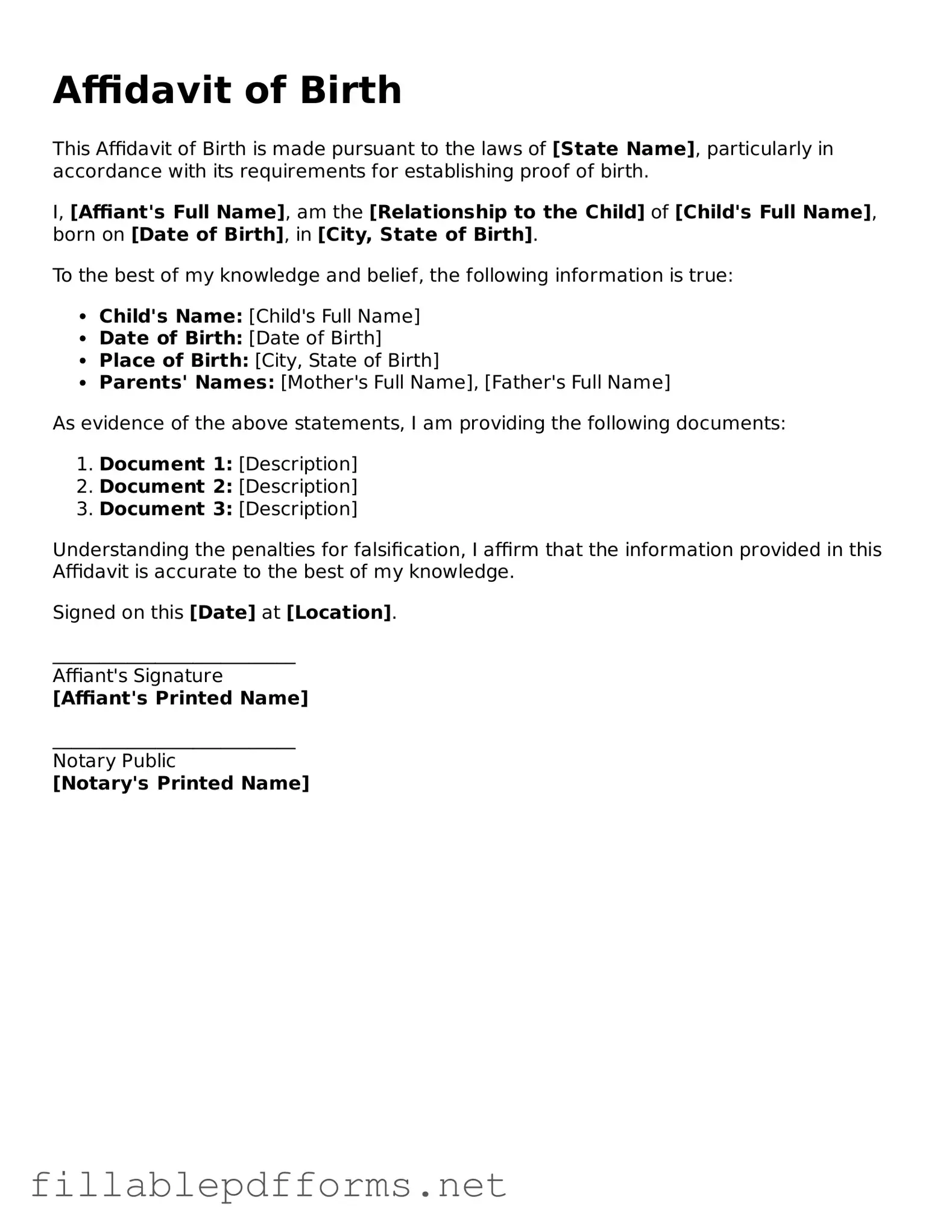The Affidavit of Birth form serves as a crucial document for establishing the identity and birth details of an individual, particularly in situations where a traditional birth certificate may not be available. This form is often utilized by parents or guardians to affirm the birth of a child, ensuring that essential information such as the child's name, date of birth, and place of birth is accurately recorded. In many cases, the affidavit must be signed in the presence of a notary public, adding a layer of verification to the claims made within the document. Additionally, the form may require information about the parents, including their names and addresses, to provide context and support for the birth declaration. Understanding the requirements and implications of the Affidavit of Birth is vital for parents navigating legal or administrative processes, as it can impact everything from school enrollment to obtaining government-issued identification. By ensuring that the form is completed accurately and submitted to the appropriate authorities, families can secure their child's legal identity and access essential services.
